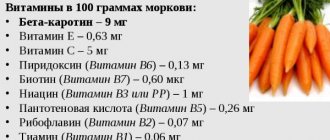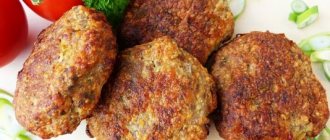general description
Morkovcha, as carrots are also called in Korean, is the most popular dish in Russia with East Asian roots. Not only does it taste good, it also contains many useful substances.
Carrots are not subject to heat treatment; to prepare it, just take a fresh root vegetable, grate it and mix with the marinade. The marinating solution contains sunflower oil and a variety of spices. The choice of oil is individual.
After a while, the salad turns out to be a little spicy in taste. There are no analogues to the Russian recipe for the dish.
Interesting and tasty salad with the addition of Korean carrots No. 2
The calorie content of such a salad will be 310 calories.
To prepare you will need:
- Liver – 500 grams;
- Korean carrots – 300 grams;
- Onion – 150 grams;
- Fresh mushrooms (champignons) – 400 grams;
- Olive oil - to taste;
- Salt - to taste;
- Mayonnaise - to taste;
- Dill - to taste;
- Milk - to taste.
It will take you 20 minutes to prepare.
Method for preparing salad with liver and Korean carrots:
- Onions should be cut into half rings;
- Peel the raw liver from films, cut into strips and soak in milk;
- Fry the onion in olive oil until half cooked;
- Add liver and milk to the onion, add salt and simmer for 10 minutes (until fully cooked);
- Fry the mushrooms in olive oil until golden brown;
- Let the liver, onions and mushrooms cool;
- Mix all the ingredients, add the Korean carrots and finely chop the parsley (separating it from the sticks);
- Season the salad with mayonnaise.
The history of the appearance of Korean carrot snacks
Such a popular snack has appeared on our tables for quite some time. This dish has absolutely nothing to do with Korea; most likely they haven’t even heard of it there. This recipe originated from Korean immigrants who lived in the USSR, while the Koreans replaced Chinese cabbage with carrots, which were so affordable at that time.
This homemade salad will be an excellent addition to any homemade or store-bought food. Eat healthy!
Benefits of the dish
This dish retains all its beneficial properties, because there is no heat treatment during preparation. Korean carrots contain many vitamins and minerals, but this is not the only positive quality.
- Gastrointestinal system . Normalizes intestinal function, accelerates metabolism and increases appetite. Ideal for a person suffering from constipation.
- Vision. Carrots contain carotene, which improves vision. Indicated for use by office workers who spend most of the day in front of a computer and those whose activities involve eye strain.
- Vascular diseases. Prevents diseases of the heart and blood vessels. Contains B vitamins. Contains vitamin PP, which dilates blood vessels.
- Prevention of acute respiratory infections. Helps avoid seasonal colds due to the presence of garlic in the composition.
- Teeth and skin. Gives skin a healthy color and strengthens teeth.
- Diet. For those who adhere to a limited diet, carrots are indispensable. Its calorie content is low and its fiber content is impressive. If you follow the carrot diet, you can lose 5 kilograms in 10 days.
In addition, the dish has diuretic and choleretic properties, is a good antiseptic and helps in the fight against various viruses. Korean carrots can restore metabolism and are used as an expectorant during colds. Helps in the fight against helminthiasis.
Calorie content of boiled carrots
This dish is especially useful for people suffering from heart disease, Alzheimer's disease, high blood pressure (hypertension) and vitamin deficiency. The thing is that when boiled, the content of antioxidants in the root vegetable increases. In addition, boiled vegetables contain phenols - substances that protect the body from aging and the formation of cancerous tumors.
But the amount of vitamin C in a heat-treated culture is almost halved. That is why, if you want to protect the body from viral infections and colds, it is better to eat this vegetable raw.
The nutritional value of this product is only 35 kcal per 100 g.
Note! In order to preserve as many useful substances as possible in the root vegetable, it is recommended to boil it unpeeled, in the peel.
Harm and contraindications
A root vegetable snack is not recommended for everyone; for a certain group of people, taking a spicy delicacy will be dangerous.
Carrots are contraindicated in Korean:
- Pregnant. During the period of bearing a child, there is a possibility of dysfunction of the gastrointestinal tract.
- Lactation. Everything a nursing woman eats goes into milk. Garlic can negatively affect its taste and quality.
- Gastritis and peptic ulcers. A spicy dish can irritate the already weak mucous membranes of the stomach and intestines and increases the secretion of gastric juice.
- Childhood. Consumption at a young age is extremely undesirable, due to the incompletely formed digestive system.
- Allergy. People prone to allergic reactions should not experiment with this product; they can only eat it in small portions.
Preparation
There is no one correct way of cooking; there are many recipes and they are all varied. They contain different seasonings and spices, proportions of ingredients. Their taste qualities, accordingly, are different from each other.
The salad can be eaten as a separate dish, but if desired, you can add some products to it. These include cucumbers, red fish, meat, squid and others.
To prepare you will need:
- Carrots-500 grams.
- Table vinegar - 1 tbsp. l.
- Sunflower oil-3 tbsp. l.
- Large onions - 2 pieces.
- Ground red pepper to taste.
- Salt-0.5 tsp.
- Coriander-1 tsp.
- Garlic - 4 cloves.
Juicy, sweet carrots are better suited for cooking. The root vegetables are thoroughly cleaned, grated on a special grater and placed in a deep glass bowl. You need to rub along the vegetable, this will make the strips longer. Grating larger fruits will help speed up the process.
- Step 1. First of all, add salt, table vinegar and sugar to a bowl of grated carrots (the proportions of the ingredients can be individual, depending on tastes). Mix and leave to marinate for an hour (at room temperature). During this period of time, the carrots will release juice.
- Step 2. To obtain a rich aroma, coriander grains are fried in a frying pan for 1-2 minutes, then ground in a mortar. You can also use store-bought ground coriander. Its smell is brighter than that of the one made independently.
- Step 3. To flavor the sunflower oil you will need onions. Oil is poured into a frying pan, placed on the stove and heated. Then the onion is dipped into it and fried until golden brown.
- Step 4. After frying, the onion must be removed; it will not be needed in the salad. Pour hot oil into carrots and stir.
- Step 5. Pass the garlic and red pepper through a press and add to the salad; you can calculate the proportions of the ingredients based on your own taste preferences.
- Step 6. The appetizer is almost ready. All that remains is to put it in the refrigerator and let it brew for at least 3 hours (to improve the taste, it is better to stand for a longer time).
By analyzing the dish, you can determine that it is quite healthy, provided it is properly prepared and used, taking into account contraindications.
Korean recipe using ready-made seasoning
At the moment of developing the recipe for Korean carrots, which everyone loves so much, you can buy ready-made carrot seasoning in the store.
To prepare you will need:
- Carrots – 1 kg;
- Ready-made seasoning – 1 package (to taste);
- Vinegar – 3 tbsp;
- Garlic – 6 cloves;
- Vegetable oil – 150 milliliters.
Cooking method:
- Carrots should be washed and peeled;
- Grate the carrots on a special grater, trying to make the strips longer;
- Pour the prepared seasoning into the carrots and mix everything thoroughly;
- Leave the mixed carrots and seasoning for 15 minutes;
- In an iron plate, mix vegetable oil and vinegar and put on fire, bring to a boil;
- Pour the resulting hot mixture into the carrots and stir;
- Cover the carrots with a lid or plate and refrigerate for 4 hours or overnight.
If desired, you can add sesame seeds; you can add 1 pack of sesame seeds to the above recipe.
Korean carrots
Korean carrots are one of the most popular East Asian dishes common in our country. Many housewives even learn to prepare this universal snack on their own. Korean carrots not only have an amazing taste, but also many essential substances for the body. Its benefits are also of interest to supporters of a healthy diet, however, they face the need to reduce the very high calorie content of the product (112 kcal per 100 grams).
Use of Korean carrots in cooking
Korean spicy carrots are a delicious snack on their own. As they say, there’s no shame in serving it, and they won’t mind eating it! In addition, the root vegetable generously seasoned with spices is a universal component of a large number of salads, for which bright, beautifully cut carrot sticks are also a decoration.
Korean carrots are used to stuff various rolls, and are also added to some dishes to add a piquant taste. And for any meat dish, such carrots are simply irreplaceable as a side dish. And a lot has been said about the benefits of combining meat with vegetables.
Description and useful properties
Korean-style carrots are made from fresh root fruits, which are not subjected to heavy heat treatment, but are only mixed with a special pickling solution. It contains vegetable oil and various spices: paprika, white or red pepper, coriander, garlic, etc. The choice of oil remains a matter of individual preference, but there is a mandatory condition - it is poured in last in a boiling state so that all the ingredients are reliably mixed into an overall flavor ensemble.
How to cook homemade Korean carrots
The key to successful self-pickling of carrots in Korean is considered to be the use of the necessary spices and the presence of a special grater.
Although the absence of the latter, if desired, can be compensated for by manual cutting. Most housewives buy ready-made seasoning for homemade snacks. This simplifies the preparation and makes the salad look like store-bought. There are many variations of its preparation. They are distinguished by different proportions of ingredients and composition of spices. When choosing the best option, you can try several recipes, since everyone has different tastes and preferences. And everyone knows better which food is good for him and which is harmful.
Spicy Korean carrots
To prepare the snack you will need:
- 1 kg fresh carrots,
- 2 tbsp. l. coriander seeds,
- 2 tsp. pepper mixtures,
- 1 small onion
- dried garlic,
- 5 tbsp. l. sunflower oil,
- 1 tbsp. l. Sahara,
- 2 tsp. paprika,
- 1 tsp. vinegar,
- 1 tsp. salt.
Cooking sequence:
- Peel the vegetable, then, using a special grater-shredder, grate it into long strips. Leave for half an hour in a sieve to remove excess juice.
- Place it in a wide bowl for easy mixing.
- Add paprika.
- Coriander grains and a mixture of peppers are ground in a mill.
- The onion is peeled and cut into random pieces.
- Vegetable oil is poured into a frying pan and put on fire.
- Sauté the chopped onion until soft.
- The garlic cloves are peeled, squeezed through a press and lightly fried in a frying pan with onions.
- Use a slotted spoon to catch the onions and garlic from the frying pan and add a mixture of coriander, sesame seeds, salt and sugar.
- Lastly, add vinegar essence, stir and remove the pan from the heat. Important! Using vinegar essence makes the taste subtler and also reduces the amount of water in the finished dish.
- The hot aromatic oil mixture is poured onto the paprika and the carrots are mixed.
- Allow the finished snack to cool and place it in the refrigerator for 4-5 hours.
Beneficial features
The benefit of this salad is that it effectively replenishes vitamin deficiency. Each of us has heard since childhood that carrots help preserve and restore vision due to vitamin A. The root vegetable really holds the record for its content, and 100 grams of salad contains 767% (!) of the daily intake.
The high fiber content is also of great value (4.8 g per 100 grams, 25% of the norm). Coarse dietary fiber from carrots produces moderate irritation of the intestinal walls, which improves peristalsis by stimulating blood circulation. This property is of great importance for those who suffer from chronic constipation and are trying to lose weight. True, the second category of people will have to make a carrot snack without oil, which significantly increases the calorie content of the dish.
The benefits of Korean carrots include many other positive effects:
- spices and herbs enrich the already diverse composition of antioxidants, which are necessary to neutralize free radicals, which are an oncological threat to the body;
- beta-carotene, in addition to its therapeutic effect on the eyes, is involved in strengthening the musculoskeletal system, and calcium, which is also found in the salad, helps it in this;
- the constant presence of Korean carrots in the diet ensures the effective removal of toxins from the liver and cholesterol from the blood vessels;
- 100 grams of salad contain 26% of the daily requirement of tocopherol (vitamin E) - a powerful antioxidant that prevents tissue aging by preventing cell peroxidation and thins the blood, protecting the cardiovascular system from the formation of clots.
When discussing the calorie content of Korean carrots, the average default value is taken, which is approximately 112 kcal per 100 grams. However, the actual energy value of a dish can be noticeably higher if the cook pours oil on it “from the heart.” Some recipes also increase calories by adding sugar. All these points should be taken into account when preparing - if you wish, you can not add oil at all or do with a minimum, then the dish will remain completely dietary. Remember also that the stomach needs to expend a lot of energy to digest an almost raw vegetable, which also reduces the actual nutritional value.
Carrots: beneficial properties and contraindications
Carrots are a vegetable crop of the Apiaceae family. It has a long edible root vegetable whose color varies from white to purple. Cultivated for almost 4000 years. The birthplace of carrots was supposedly Afghanistan, but it appeared in Europe in the 20th-23rd centuries.
The orange color of the carrot comes from Dutch breeders, who developed a special variety in honor of the Royal Family of Orange, whose favorite color was orange. In the book “Russian vegetable garden” in 1877. R. Schroeder was the first to describe new varieties of carrots. Seed material was then imported from France and Holland and, by reproducing the seeds, the best varieties were saved for sowing.
The founder of scientific selection in Russia was S. Zhegalov, he developed the famous types of carrots “Nantes” and “Chantane”, which are still popular among gardeners. Experiments are now being conducted to create new varieties with low nitrate accumulation.
To date, 60 varieties of carrots are known. The wild carrot, a giant weighing 8.61 kg, was grown in Alaska, and the longest, 5.84 meters, is listed in the Guinness Book of Records.
Half of all carrots are produced by China; in 2011, for example, 35.658 million tons were harvested. Every year, doctors recommend eating 8 kg of carrots for each person. Carrots stand out for their important beneficial properties for the human body and are second in popularity only to potatoes.
It is consumed raw, boiled, in marinade, as a spice, in soups and main courses, in pies, snacks and baby food. In Germany they prepared “soldier’s” coffee, which was invigorating and had a good aroma; during the war they ate carrot tops and made tea from them.
We invite you to prepare the popular and tasty “Korean-style carrot” salad for your New Year’s table. In Korea itself there is no such dish at all; real Korean kimchi salad was made from Chinese cabbage, which was never seen in the USSR, and therefore the Russified Koreans replaced it with a more affordable vegetable - carrots - and did not lose.
Korean carrot recipe
- Carrots - 500 g;
- Sugar - 2 tbsp. spoons;
- Vegetable oil;
- Salt - 1 teaspoon;
- Black pepper (bitter) - 1 teaspoon;
- Garlic - 3-4 cloves;
- Coriander;
Carrots are grated on a special grater into long strips, plus sugar and salt. Hand shake plus pepper, vinegar and coriander. Heat the oil and pour into a bowl. Add the garlic and press into the refrigerator for 8 hours. You can also simply add ready-made seasoning to taste. Bon appetit!
Useful properties of carrots
Carrots are a unique and healthy vegetable!
It contains a lot of vitamins:
- IN;
- A;
- IN 1;
- AT 2;
- AT 3;
- AT 6;
- AT 9;
- C;
- E;
- H;
- K;
- RR;
- D;
And minerals:
- Potassium;
- Magnesium;
- Calcium;
- Phosphorus;
- Sulfur;
- Sodium;
- Iron;
- Zinc;
- Manganese;
- Copper;
- Bromine;
- Iodine;
- Fluorine;
- Molybdenum;
It is so rich in carotene that it is second only to sweet peppers and therefore you should eat 1 - 2 carrots daily if you have vitamin deficiency, anemia and during pregnancy.
Scientists have found that carrots are a strong antioxidant and fight bad cholesterol, increase blood circulation, and protect the heart. Doctors insist on eating carrots in the diet as a preventive measure against cancerous tumors; in addition, scientists have discovered a new drug, Falkarinol, which helps in the treatment of formed cancer cells.
Beta-carotene is an excellent remedy for eye health: it protects against senile cataracts and vision loss. Carrots are also an excellent antiseptic and wound healing agent. In folk medicine, its laxative and anthelmintic properties are used.
Harm of carrots
Carrots are contraindicated for people suffering from an allergic reaction to carotene; doctors also do not recommend eating carrots during an exacerbation of stomach and duodenal ulcers, since a large amount of vitamin C significantly increases the acidity of the stomach.
Diet and carrots
Nutritionists love carrots for their low calorie content (100 g contains only 32 kcal). Carrots remove water from the body, cleanse it of dangerous substances (and even radiation). Fasting days on carrot puree and juice are very effective. When preparing, remember: carrots are better digested when boiled and with the addition of any fats.
Carrots in cosmetology
Carrots give a beautiful tone to the skin, increase elasticity, and hair becomes shiny and healthy. Since carrots contain many antioxidants, skin cells age much more slowly, so we offer you recipes for masks that should be used weekly:
- For gray complexion or pigmentation, chop carrots in a blender and apply the pulp to a cleansed face for 10 minutes;
- You can soothe your skin with a mask of carrot puree and milk 1:1;
- For acne, try carrot and potato puree;
- Rejuvenating mask carrot puree and green apple puree 1:1;
- To nourish and improve skin health, mix carrot juice, olive oil, yolk and sour cream.
The secret is that carrot masks rejuvenate the skin due to a large amount of oxidants, vitamin A, carotene and potassium. Here are just a few recipes for “youth masks” that guarantee you will look 5-10 years younger.
Recipe 1
Mix ingredients:
- Boiled carrots;
- 1 spoon of honey;
- 1 spoon of olive oil;
- 1 tbsp. spoon of flour;
- Lemon juice;
Bring to the consistency of sour cream. Do it once a week for 15 minutes for 1 month
Recipe 2
Mix ingredients:
- 2 boiled carrots;
- 2 boiled carrots;
- 2 tablespoons of kefir;
- 2 aloe leaves;
- Vitamin E capsules;
Apply to face and neck for 20 minutes
Recipe 3
Mix ingredients:
- 4 spoons of white clay;
- Carrot juice 2 - 6 tbsp. spoon;
Shake the resulting mixture and apply the cleansing mask to your face.
Restrictions
Although Korean carrots are an excellent digestive stimulant and a very healthy product, they can be harmful to humans. This applies to situations where the body’s condition can only worsen from eating such a spicy dish. First of all, this applies to people with inflammatory processes and diseases in the digestive system: gastritis, peptic ulcers, inflammation of the small or large intestine. If you have these ailments, it is better to avoid eating this delicious salad.
What are the benefits of Korean carrots?
Korean carrots have long become as popular and beloved by many as, for example, sauerkraut. Without this bright, spicy salad, it is sometimes impossible to prepare some other dishes, which necessarily include thin, long straws of juicy root vegetables.
In general, Korean carrots come from a traditional Korean dish called kimchi or spiced cabbage. During the Soviet era, Chinese cabbage, which was required according to the recipe, was quite difficult to obtain, so they began to add carrots to the dish. Interestingly, our man liked the dish in this way and carrots completely replaced cabbage.
Korean carrots are considered by some to be a salad, others as a snack, and others as a seasoning, but be that as it may, this dish with its inherent sharpness and piquancy is in stable demand in our country. You can buy this product in any store, but most housewives prefer to cook Korean carrots themselves - just stock up on the necessary set of herbs and spices. The calorie content of Korean carrots is approximately 112.6 kcal per hundred grams of the finished product.
This dish contains a certain amount of correctly selected ingredients. It is clear that the most important of them is carrots. When preparing carrots in Korean, it is better to choose medium-sized root vegetables, because they not only have the necessary juiciness, but also contain a lot of useful substances. Peeled carrots are cut into long thin strips using a knife or a special grater, and then mixed with the necessary seasonings and vegetable oil.
The main spices that make up Korean carrots include garlic, ground black and red pepper, crushed coriander seeds, salt, sugar, and vinegar. You can choose vegetable oil at your discretion, and the amount of granulated sugar is also adjusted to taste. In addition, other products are often added to the finished dish, which give Korean carrots a new taste and special piquancy: mushrooms, eggplants, onions and many others.
Korean carrots - calorie content, beneficial properties
| product | calorie content | squirrels | fats | carbohydrates |
| carrot | 35 kcal | 1.3 g | 0.1 g | 6.9 g |
| boiled carrots | 25 kcal | 0.8 g | 0.3 g | 5.0 g |
| Korean carrots | 134 kcal | 0 g | 9.0 g | 12.9 g |
| Korean carrots with mushrooms | 71 kcal | 1.3 g | 5.0 g | 5.7 g |
| Korean carrots with asparagus | 95 kcal | 1.5 g | 7.1 g | 6.1 g |
| Korean carrots with cabbage | 113 kcal | 0 g | 9.0 g | 5.3 g |
Carrots are a root vegetable that are orange and sweet. Its main part is water and fiber. It is very low in calories, and dishes made from it are suitable for diets.
Useful properties and composition of carrots
Carrots contain fiber and therefore improve digestion. To do this, it must be eaten raw. In addition, it retains more vitamins in its raw form.
Carrots contain a lot of vitamin A. Therefore, if you overuse them, your skin will turn orange. Vitamin A, like E, is best absorbed with fats, so the healthiest way to consume carrots is in a salad with vegetable or butter.
In addition to vitamin A, carrots contain vitamin C and B vitamins. Therefore, carrots are called “vegetables for beauty”: thanks to these vitamins, nails and hair are strengthened, skin is cleansed, and teeth are strengthened. Carrots also help neutralize damage from ultraviolet rays.
Carrot juice improves blood circulation, helps improve vision, and significantly reduces the risk of heart attack and stroke.
What are Korean carrots made from?
Korean carrots contain a certain set of products; the main ingredient, of course, is carrots. But the seasonings and method of preparation depend on them whether it will be real Korean carrots or just a carrot salad with seasonings. Classic ingredients for Korean carrots:
- the carrot itself (it is better to choose medium-sized carrots);
- seasonings (garlic, ground coriander, sesame seeds, ground red pepper, black pepper);
- vinegar, salt and sugar for marinade;
- onions and oil (onions are used when calcining oil and are not added to the finished dish).
When preparing Korean carrots, the calorie content increases due to oil, but all the beneficial properties of carrots are preserved.
Source: https://100diet.net/produkty/korejskaja-morkov.php
The benefits of carrots in Korean
The beneficial properties of fresh orange root vegetables are known to everyone, but are there any benefits for Korean carrots? Without a doubt. It turns out that this dish helps improve the digestion process due to the fact that it is a fairly spicy snack. It helps the secretion of gastric juice, thereby increasing appetite. In addition, with regular consumption of small amounts of this product, the walls of blood vessels are strengthened.
The benefits of Korean carrots are also hidden in the recipe for preparing this dish, which preserves important substances for us, in particular vitamins. For example, vitamin C is necessary for our body for the normal condition of large vessels. Vitamin B has a beneficial effect on the health of capillaries, and vitamin PP is known for its vasodilating effect.
Sources:
https://polzaivredno.ru/morkov-po-korejski-poleznye-svojstva-i-vred/ https://ozak.ru/pitanie/product/morkovka-po-koreyski.html https://foodfor.ru/morkov -po-korejski
Korean carrots at home for 1 kg of carrots
You can buy Korean-style carrots at the market or in a supermarket, but you shouldn’t overpay, since they are easy to prepare at home. For a large family, it would be best to prepare a similar savory snack per kilogram of juicy carrots.
Ingredients:
- large carrots – 1,000 g;
- salt – 4 tbsp. l.;
- vegetable oil – 5 tbsp. l.;
- granulated sugar – ½ tbsp. l.;
- vinegar essence (70%) – 1 tsp;
- garlic – 4-5 cloves;
- One onion;
- ground hot red pepper – ½ tsp;
- ground black pepper – ½ tsp;
- coriander – 1.5 tsp.
Cooking carrots is not difficult, since a mixture of seasonings for mild and spicy dishes is available. In addition, you can add herbs, lemon juice, and sesame oil to the appetizer. For quick preparation, table, rice or apple cider vinegar is suitable.
Cooking method:
- Wash and peel the carrots. Cut into pieces, approximately 10 cm.
- Grate on a special grater. Place the carrot mixture in a bowl and season with salt.
- Mix gently and leave for 25 minutes.
- Mash the mixture to release the juice.
- Place grated root vegetables in a fine sieve. Remove juice. Transfer the mixture into a container and add vinegar essence.
- Coarsely chop the onion.
- Finely chop the garlic with a knife.
- Heat vegetable oil in a frying pan. Fry the onion in oil until brown.
- Remove onions from oil.
- Add sugar.
- Place the carrot mixture in a container in a heap. Add red pepper and coriander.
- Pour hot oil onto the top of the slide.
- Add black pepper and garlic.
- Mix all ingredients of the dish.
- Cover the container with a lid.
- Place in the refrigerator for 5 hours.
Preparing such a dish is quite simple if you purchase a special grater. The Korean version is unique by cutting carrots into thin, beautiful noodles, which cannot be done by hand.
You can mix carrots with salt with your hands, but only if you are wearing rubber gloves. Before putting the spicy snack on the table, you can sprinkle it thickly with sesame seeds.











